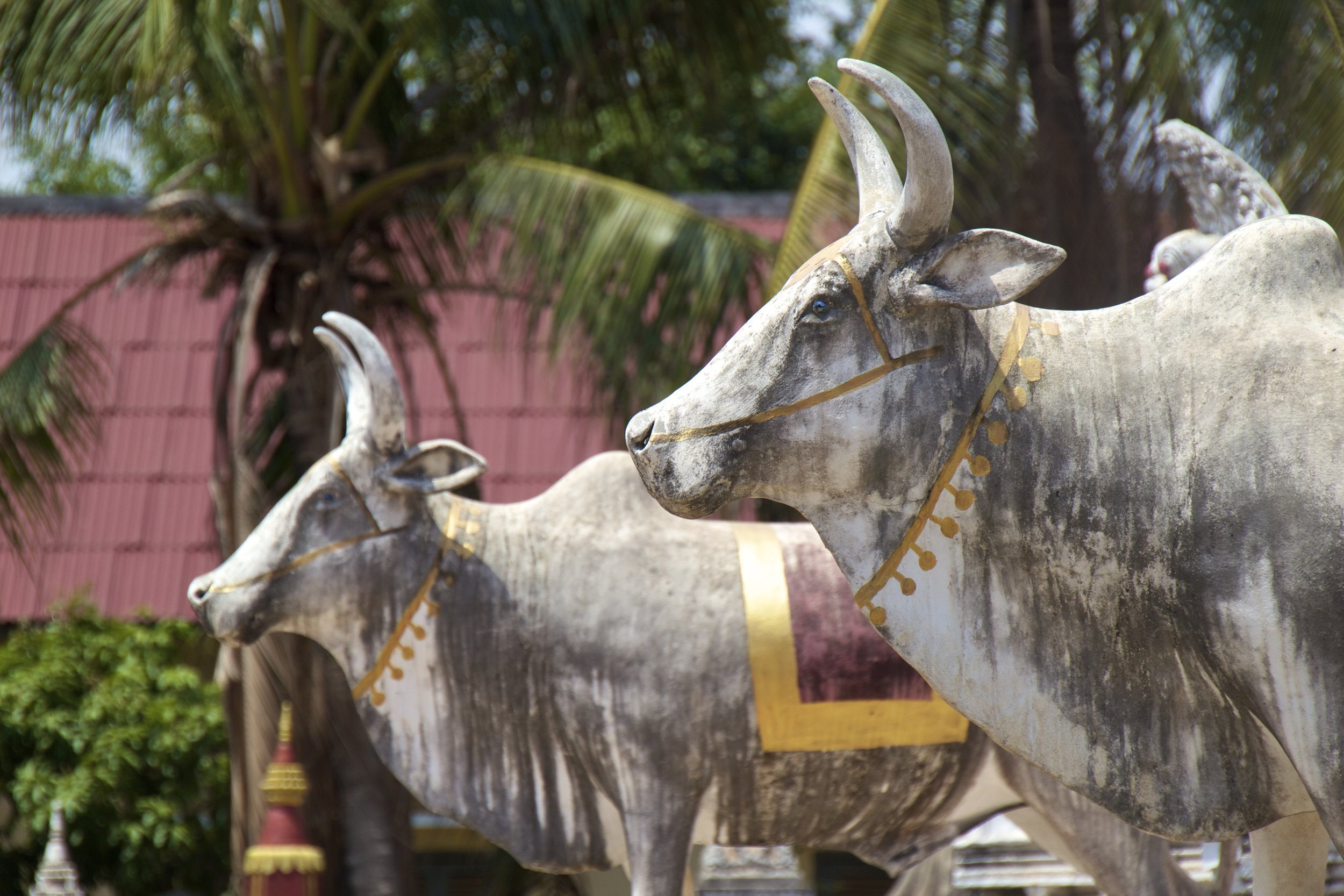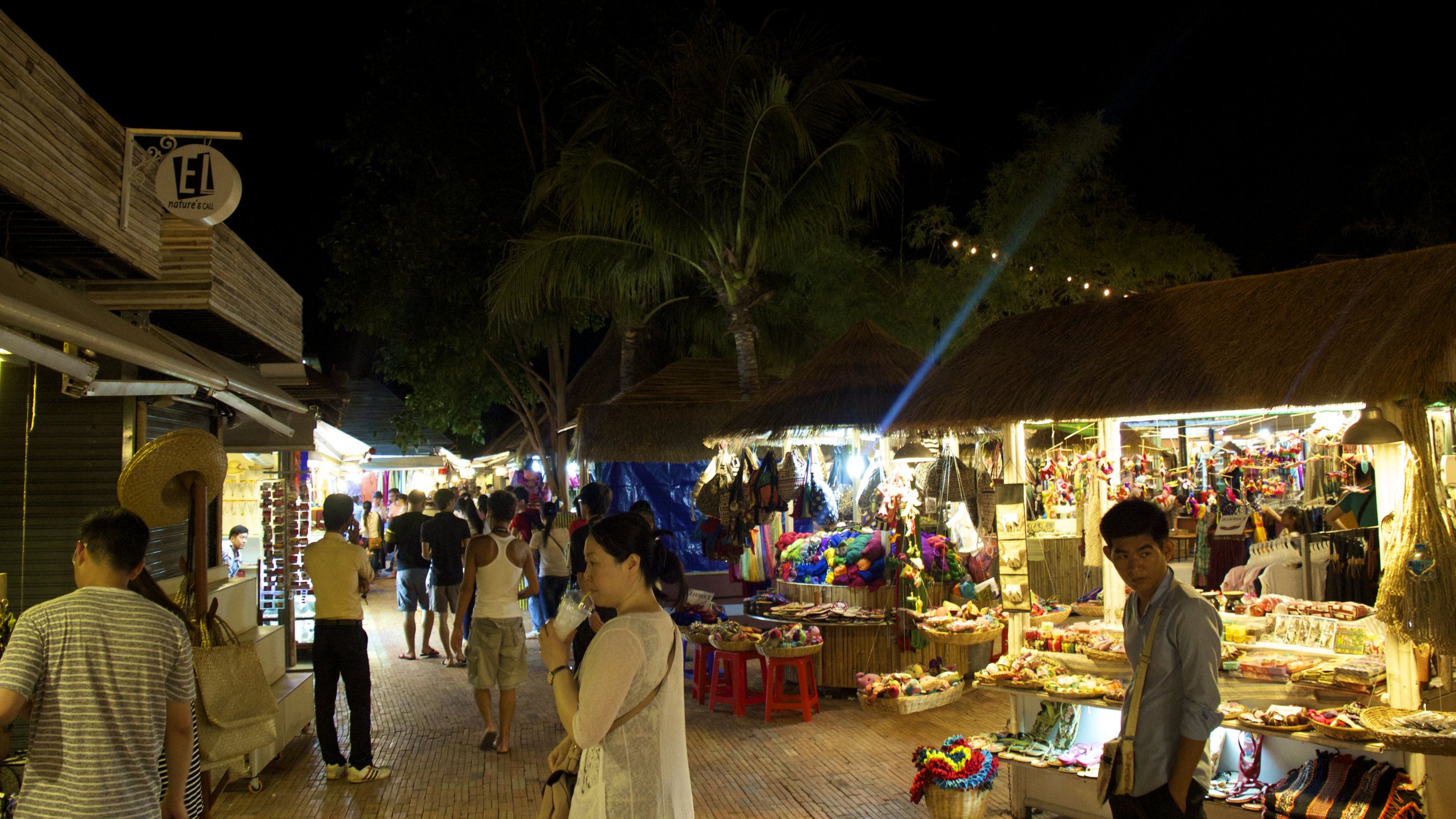Siem Reap, Cambodia
[ ខេត្តសៀមរាបប្រទេសកម្ពុជា ]
Language: Khmer | Population: 903,030 | Landmarks: Angkor Wat
Going to Cambodia is a lot like going to a strip club – you better arrive with a fat stack of ones. Trip Advisor ranked Siem Reap as the #1 destination in Asia last year. The Khmer new year was just 2 weeks ago and Siem Reap apparently received roughly 300,000 international visitors in addition to 1,000,000 domestic visitors (in that week alone) who all came to take part in the giant party that was being held in Angkor Wat and the surrounding temple complexes. With an economy fueled primarily by tourism, the local establishments have apparently thrown in the towel with using their own currency. Most prices are listed in USD. When I paid my 35 USD visa fee, the ATM dispensed American money. This however does nothing to raise Southeast Asia’s famously low prices, so the 50 dollar bill that the ATM gives you will be spent mostly in increments of 1 or 2 dollars. The problem is that although everybody in Siem Reap accepts USD, nobody can make change for it. If they give you change it will likely be in infinitesimal denominations of KHR (Cambodian Riel). Thus my distasteful strip club metaphor. You were warned – Now we’ll move on.
On our flight to Siem Reap we faced some pretty formidable cloud formations. As the plane shook I white knuckled my chair, doing my best not to have a flashback to our last voyage through a storm in Indonesia. We managed never to enter any of the storm clouds though and coasted (mostly) gracefully through a heaven-scape of thunderhead clouds. Below us was a brown savanna like landscape, crisscrossed by muddy brown rivers.
Siem Reap is in one of Cambodia’s poorest areas but it is clearly being rescued from that poverty by the tourism industry. The rough dirt roads and tin roofs typical to the poorer areas of Southeast Asia are tempered with stretches of smooth roads and giant hotels. Cambodia’s government, though openly denounced by most locals we talked to, has recently adopted one of the most liberal foreign investment policies on the continent, as evidenced by the “Taste of Pyongyang” Restaurant we passed on our way from the airport.
The week we were there was not only a holiday for Vietnam, but also for Japan – it is their ‘Golden Week’ – so the city was mobbed with tour buses full of selfie-takers and umbrella-holders.
The normal way to get around within the city is via tuk-tuk. Tuk-tuks are essentially rolling seats towed behind motorbikes. Rides around the city usually cost somewhere in the 2 USD neighborhood.
It is true that Siem Reap did not become the tourist mecca that it is by virtue of the city itself (people only come here to see Angkor Wat) but that doesn’t mean there’s nothing to do there.
What is there to do in Siem Reap?
1. EAT!
I’ll spare you the foodie post here and suggest 2 restaurants if you are ever visiting.
Haven – Run by a Swiss nonprofit called Dragonfly. Very highly regarded for its food and focused on helping poor children who are aging out of the Cambodian orphanage system transition to “real life”. You can check it out here: http://www.havencambodia.com/en/welcome/
Marum – One of a series of similar restaurants throughout Southeast Asia by a nonprofit called Tree Alliance. You can visit their site here: http://tree-alliance.org/
These restaurants are run by NGOs. They provide teenagers that come from backgrounds of abject poverty and human trafficking with training in the hospitality industry (very useful in a place like Siem Reap). It is one of the better ways that I have heard of to help kids change their situations. You will be served by nervous looking 16-year-olds and the food is actually really good.
Check them out.
2. Explore some of the local pagodas
Cambodia is a Buddhist nation and as such, every neighborhood/town of every city has its own, massive temple. No matter how small or poor the neighborhood or town, the pagodas are always massive. These temples are all filled with monks, who were, to me, the most intriguing part of the whole city. Everywhere you go you will see groups of bald men in bright orange robes walking, riding tuk-tuks or hitching a ride on the back of a motorbike.
So who are these monks? What is their deal? They live and work as Buddhist scholars in their local pagoda. Their salaries are paid by donations from the local community. In exchange they will teach their fellow neighbors about the history and teachings of Buddhism. Moreover, donating to the monasteries is a way that Cambodians can “earn good luck.” This religious incentive is more than enough to provide for the communities of monks living here. Most poor Cambodian children must choose between an education and dinner each night. Thus, joining a monastery is a great way for poor children to be both fed and educated as they grow up. And no – it’s not for life. They can leave the monastery whenever they choose. Also no – there is no vow of silence or anything like that. In fact, you will often see monks talking on their cell phones. They are actually a pretty chill group of people.
In one pagoda that was a little ways off the beaten path (and thus probably not visited by tourists like me very often) I approached a group of them. The monks were sitting around counting their money and relaxing. Some of them were covered tattoos – artifacts from their former lives. I asked if I could take a picture of one of them and they all chuckled. “One dolla!” one of them joked.
In one pagoda we visited we got a little more than we bargained for. This pagoda apparently sat on what was a miniature and relatively unknown version of the Killing Fields. There was a monument filled with human remains and covered in pictures from the 1970s. I’ll be visiting the ‘real’ killing fields outside of Phnom Penh soon so I’ll save that stuff for later. But the truly disturbing thing about this place were the beggars that were there.
Have you ever seen the pictures of the babies with hideously giant heads associated with America’s use of Agent Orange in Vietnam? Some of these babies were sitting in the shade outside the pagoda with their mothers. I asked our driving if this also might have anything to do with Agent Orange but apparently not. It is a naturally occurring medical condition called hydrocephalus. It was pretty difficult to look at. Apparently there is no government assistance provided to families with disabled children so they must resort to begging.
3. Go to the Night Market
It is a cool vibe. It isn’t the biggest or most authentic market I’ve seen but if you go there you will have a good time. I was pretty proud of myself for haggling the price of a t-shirt down from 12USD to 5USD.
You can eat any kind of food that you want, including grilled cockroach. That would have been a cool blog post………… but no thank you. Here are some pictures:
4. See a traditional Cambodia Dance
We saw a dance at a giant restaurant called Kulen II. You should buy a ticket ahead of time to get a good seat since it’s a pretty big place. The 12 USD you will pay for a ticket includes an all-you-can-eat buffet so it’s not a bad deal. The dances were really interesting and way more fun then the traditional dances we saw in Indonesia. Although I should mention that I'm suspicious that we saw a pretty mediocre dance group when we were in Indonesia so don't let me discourage you from seeing one yourself. The crowd clapped and laughed along with the dancers, it was a good time! Also, the girls in the dance were all pretty gorgeous.
The food was just okay, but it had been about a year since I had seen a buffet of these proportions so I wasn't too disappointed.
Cambodian People
We are just beginning our time here but they are already contenders for the nicest people on the planet. In Vietnam it is pretty common to have 2 neighboring street vendors fighting each other for your business, which is petty and awkward, but in Cambodia it is totally reversed. Whenever there were 2 tuk-tuk drivers that wanted us as customers, one of them would always very politely tell the other to take us. It's pretty selfless; I'm attributing it to a much more collectivist mindset than in Vietnam. In Vietnam people want you to do business with them, right now. In Cambodia (in Siem Reap at least – we’ll see about Phnom Penh) people seem content so long as you are doing business with somebody and helping their economy. As a traveler I really appreciate this – it takes the pressure off.
Up next: Angkor Wat






























